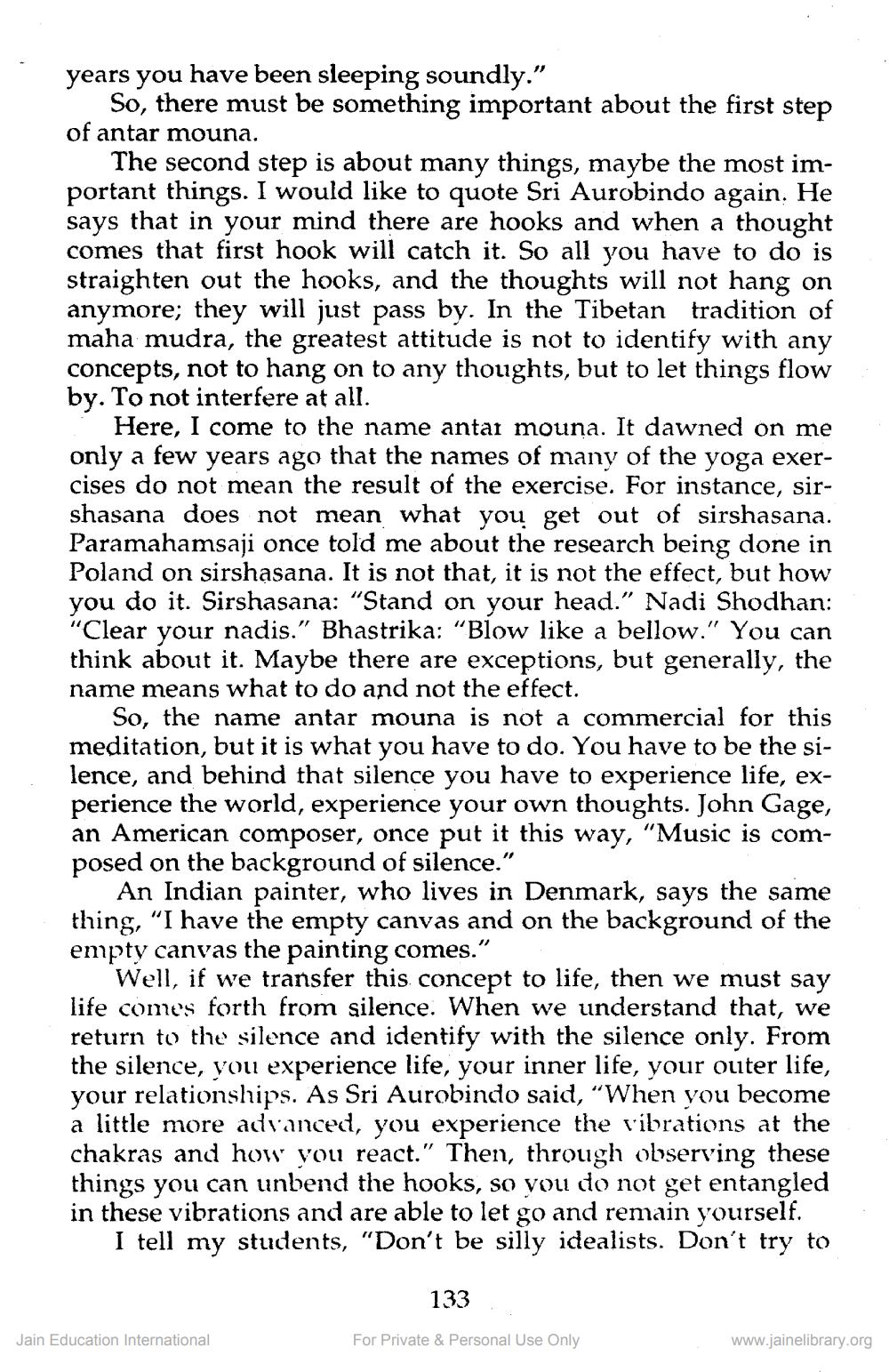________________
years you have been sleeping soundly."
So, there must be something important about the first step of antar mouna.
The second step is about many things, maybe the most important things. I would like to quote Sri Aurobindo again. He says that in your mind there are hooks and when a thought comes that first hook will catch it. So all you have to do is straighten out the hooks, and the thoughts will not hang on anymore; they will just pass by. In the Tibetan tradition of maha mudra, the greatest attitude is not to identify with any concepts, not to hang on to any thoughts, but to let things flow by. To not interfere at all.
Here, I come to the name antar mouna. It dawned on me only a few years ago that the names of many of the yoga exercises do not mean the result of the exercise. For instance, sirshasana does not mean what you get out of sirshasana. Paramahamsaji once told me about the research being done in Poland on sirshasana. It is not that, it is not the effect, but how you do it. Sirshasana: "Stand on your head." Nadi Shodhan: "Clear your nadis." Bhastrika: “Blow like a bellow." You can think about it. Maybe there are exceptions, but generally, the name means what to do and not the effect.
So, the name antar mouna is not a commercial for this meditation, but it is what you have to do. You have to be the silence, and behind that silence you have to experience life, experience the world, experience your own thoughts. John Gage, an American composer, once put it this way, "Music is composed on the background of silence."
An Indian painter, who lives in Denmark, says the same thing, "I have the empty canvas and on the background of the empty canvas the painting comes."
Well, if we transfer this concept to life, then we must say life comes forth from silence. When we understand that, we return to the silence and identify with the silence only. From the silence, you experience life, your inner life, your outer life, your relationships. As Sri Aurobindo said, "When you become a little more advanced, you experience the vibrations at the chakras and how you react." Then, through observing these things you can unbend the hooks, so you do not get entangled in these vibrations and are able to let go and remain yourself.
I tell my students, "Don't be silly idealists. Don't try to
133
Jain Education International
For Private & Personal Use Only
www.jainelibrary.org




